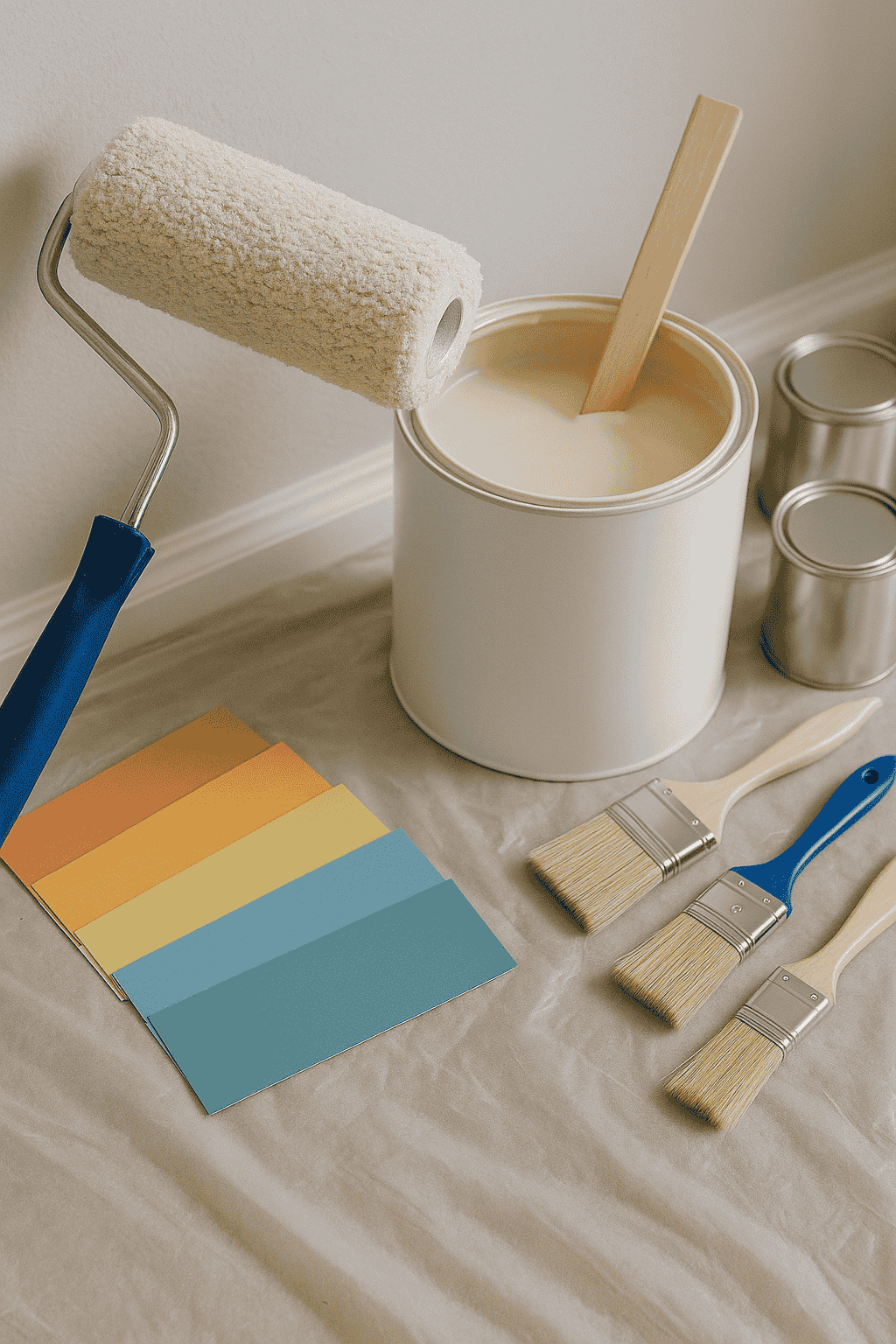Our reactions to emotional states largely depend on how colours affect our environments. Modern interior design requires selecting the proper hues because they help shape the appearance and internal interactions with the environment. Studies of the effects of colour on human emotions have developed into an essential field in interior design, investigating how shades impact behaviour, well-being, and physical wellness. Before renovating a home, people need to learn about colour effects to achieve their best results. This article examines color theory in interior design, identifying stress-relieving paint choices and offering relaxation concepts for living rooms that feature neutral spectrum tones.
The Role of Colour Psychology in Interior Design
Research indicates that interior design and colours create mental reactions that modify human psychological states and behavioural responses. Warm-colored, energetic paint shades like red and orange work best as energizing elements in kitchen spaces, as well as dining areas, work areas, and creative workstations. Laughter-inducing bedrooms, as well as bathrooms and meditation areas, feature calming blue-toned, green-accented, or purple atmospheric palettes. People who want to design their spaces or pick interior colours must first identify how colours activate emotional responses to select appropriate colour schemes for each area. A bright red colour works well as dining room decor, but it can cause overwhelming feelings in bedroom or study settings. Simple applications of psychological colour principles lead to attractive and harmonious interior designs.
Using Colour Theory in Interior Design to Create Harmony
Interior design colour theory relies on the colour wheel to help designers and homeowners create matching colour schemes that evoke visual pleasure. The selection of neighboring hues around the color wheel leads to a similar color scheme. Using analogous and complementary colours on the wheel creates a serene appearance, whereas complementary colours produce bold effects. Strike and split-complementary schemes are popular since they create energetic yet balanced visual effects. Applying colour theory will help you select hues that generate continuous transitions between separate indoor areas. Sage green colour works well with peach-themed hues and white tones to create a peaceful environment that enhances areas or rooms in shared zones, such as dining areas.
Best Paint Colours for Relaxation
People planning restful spaces, such as bedrooms, bathrooms, and reading areas, must choose paint to create peaceful environments. The colours in the blue spectrum stand among the best choices for achieving tranquillity and mental relaxation. Achieved relaxation appears through pale sky blue, dusty turquoise, and promotes heavy colors, which promote rest, introspection, and quiet reflection. The natural inspiration of moss, mint, and eucalyptus colours within the green spectrum is a grounding element that provides a rejuvenating feel. The peaceful and comforting character of lavender and muted lilac paint colours makes them perfectly suited for creating personal retreats. Light pinks, combined with warm pastels, create a gentle atmosphere that feels nurturing and soothing. A home transformation into a peaceful sanctuary becomes possible by selecting appropriate, relaxing paint colours.
Cozy Paint Colors for Living Rooms
A living room serves as the emotional centre of your home, as it’s your gathering space and relaxation destination for entertainment, and creates lasting life moments. An instant improvement in the living room atmosphere occurs when you select appropriate, cozy paint colors, as they create inviting spaces with natural warmth. Atmospheric rooms derive their welcoming vibe from these natural-toned colors, which bond environmental elements to interior spaces. Jewel-toned deep emerald, burnt orange, and sapphire to raise elegance while preserving warm feelings in room environments. The combination of soft caramel with dusty rose and olive green creates an elegant and stylish environment that remains modern and timeless. Taupe, terracotta, and olive green paint choices enrich classic and modern decorating spaces. The welcoming living room environment develops through comforting paint colours, multiple layers of lighting fixtures, and gentle textures made from organic materials.
Timeless Appeal of Neutral Tones in Interior Design
Neutral interior design hues deliver elegant simplicity and enduring style beyond the intense strength of robust colour options. Virtually all residential configurations use beige, gray, and soft white colors as foundational elements, which commonly appear in contemporary minimalist Scandinavian home decor. Neutral backgrounds create an oasis of calm, highlighting the dominant elements —artwork, plants, furniture, and textiles —found in a space. These colours create an open and spacious environment, which works perfectly for tight living spaces to achieve visual openness. A neutral colour scheme gains visual depth through the sensible arrangement of linen, wool, leather, wood, and stone, creating texture while remaining non-intrusive to the senses. It features a timeless, elegant, and everlasting style, taking advantage of its base, regardless of the chosen aesthetic style, from rustic comfort to contemporary sleekness.
Final Thought
Selecting home colours involves more than just attractive appearance choices, because they affect emotional responses and spatial functionality within a property. Using colour in design practice, combined with fundamental colour theory, enables you to create spaces that promote comfort and support relaxation, creativity, and improved social connections among occupants. Your paint colour selection determines the transformative power of your interior spaces because it extends beyond relaxation elements into home comfort and space elegance through neutral design choices. First, trust your instincts before trying out paint samples, since you should feel free to use colour as a tool to share your personality style. Your home must represent you, since well-chosen colours will bring elegance to your life story.

